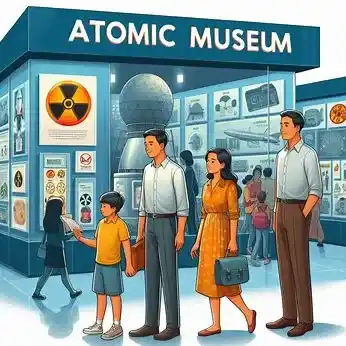Exploring the 4 Major Events of the Atomic History Timeline in a Gallery

Step into the world of atomic history and witness the transformative events that shaped our modern understanding of the universe. In this gallery, we will embark on a journey through time to explore the four major events that have shaped the atomic history timeline.
Unlock the mysteries of atomic structure, unravel the impact of nuclear power, and delve into the ethical implications of these significant events. Let us delve deeper into these major events and gain a new perspective on the world around us.
Are you ready to be inspired by the milestones of atomic history? Let the gallery tour begin.
1. Discovery of the Electron in 1897 by J.J. Thomson
The discovery of the electron in 1897 by J.J. Thomson is a major event in the atomic history timeline and is featured in galleries around the world. These scientific discoveries revolutionized the way scientists understood the fundamental building blocks of matter.
Through his experiments with cathode rays, Thomson was able to show the existence of the electron, a subatomic particle with a negative charge. This discovery not only provided a deeper understanding of the atom but also paved the way for advancements in technology, such as the invention of the television and the development of particle accelerators.
2. Groundbreaking Experiment by Ernest Rutherford in 1911
This experiment, known as the gold foil experiment, was a pivotal moment in the understanding of the structure of the atom. Rutherford and his team bombarded a thin sheet of gold foil with alpha particles and observed their behavior. The results were unexpected and groundbreaking.
They showed that most of the alpha particles passed straight through the foil, but a small percentage were deflected at large angles. This led Rutherford to propose the concept of a dense, positively charged nucleus at the center of the atom.
3. The 1938 Discovery of Nuclear Fission by Otto Hahn
In a gallery showcasing this major discovery, visitors can learn about how Hahn and his colleagues were able to split the nucleus of an atom and release enormous amounts of energy. This groundbreaking finding paved the way for the development of a nuclear weapons display and nuclear power plant.
Yet, it also raised important ethical concerns about the use of nuclear technology. The gallery highlights the scientific significance of this event and its impact on society and the world as a whole.
4. The Creation of the First Atomic Bomb During World War II
This groundbreaking accomplishment was carried out by the Manhattan Project in the United States. This forever changed the course of history and unleashed a new era of warfare. The Atomic Museum is now offering tickets to witness the impact of this event and to learn more about the science and technology behind this destructive weapon.
Visitors will have the opportunity to see the original diagrams and equipment used in the development of the bomb. Don’t miss this chance to explore the major events of the atomic timeline and their impact on the world we live in today. Get your tickets now to visit the Atomic Museum.
The Pivotal Moments of the Atomic History Timeline in a Captivating Gallery
The Atomic History Gallery has provided a unique and informative experience exploring the major events of atomic history. From the discovery of atoms to the development of nuclear weapons, these events have shaped our world in countless ways.
Don’t miss out on this opportunity. Expand your knowledge of the fascinating world of atomic history timeline. Visit the gallery and embark on a journey through time and science.
Looking for more tips? Make sure to bookmark our page and check out more articles.






